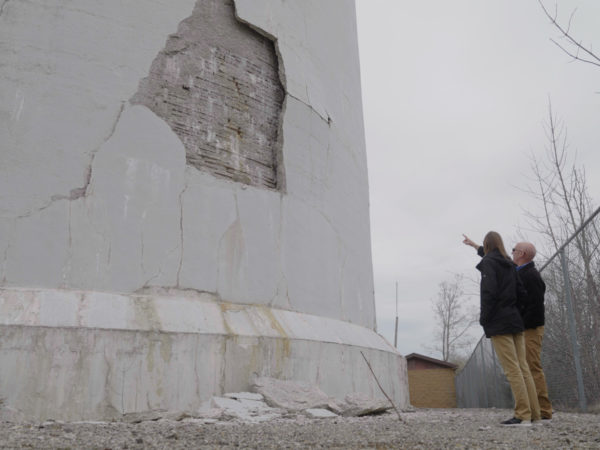
White House official and chair of the White House Council on Environmental Quality, Brenda Mallory, visited Minnesota’s Tartan High School on May 6 to tour the area known as “ground zero” for PFAS contamination. The Lake Elmo school is located in a “plume” created by Minnesota multinational chemical giant, 3M. The company was dumping PFAS in the Washington County Landfill in Lake Elmo from at least 1971 to 1974, and the problem still persists today.
Amara Strande, a graduate of Tartan High School, spent the last few months of her life lobbying Minnesota state lawmakers to crack down on the “forever chemicals,” which contributed to her liver cancer diagnosis. Last year, state lawmakers passed Amara’s Law, which will ban all non-essential use of PFAS by 2032.
In Wisconsin, lawmakers are still deadlocked on how to handle funding to clean up per- and polyfluorinated substances (PFAS). The Joint Finance Committee approved a plan for the disbursement of opioid settlement money but rejected Gov. Tony Evers’s PFAS funding plan. This comes after last month, when Evers vetoed Republican-backed bill because Democrats believed the bill shielded polluters from being held accountable.
Meanwhile, a Chicago Tribune op-ed penned by Evers, Illinois Gov. J.B. Pritzker, and Alaina Harkness talks about how the Great Lakes region has the potential to lead the way in clean water innovation. Current, a Chicago-based nonprofit led by Harkness, is part of a coalition called Great Lakes ReNEW, which will devote millions of dollars to recycling heavy metals from our waterways and removing chemicals, such as PFAS.
Farmers and agricultural workers are bracing for new financial consequences, in the wake of the recently developed federal limits on PFAS levels. In an interview with The Indiana Lawyer, Will Gardner, a partner at Taft Stettinius & Hollister LLP’s Environmental Practice Group, said farmers will have to account for their contribution to local PFAS levels, as the chemicals often show up in biosolids used in fertilizer.
Last week, the Hazardous Product Act was introduced in Michigan legislation. This would prohibit the sale or distribution of goods containing intentionally added PFAS. The bill has 20 co-sponsors and if passed would go into effect by January 1, 2027. On May 6, The Michigan PFAS Action Response Team confirmed they are investigating an area of interest near the Grand River in Kent County for PFAS contamination. Fenske Landfills, Inc. in Tallmadge Township accepted liquid industrial waste from 1967 until sometime in the 1970s.
Ohio’s Montgomery County will soon get a new $6 million environmental lab to test and treat water pollution. The funding comes federally from the American Rescue Plan. This is crucial considering Ohio has some of the worst rates of water quality.
In a Chicago Sun Times op-ed, Allen LaPointe wrote about using wetlands as inspiration when figuring out how to filter out PFAS. LaPointe is vice president of environmental operations at Shedd Aquarium and a member of the Rivers of Illinois Coordinating Council.
“We already know that wetlands are particularly adept at cleaning our water. There is also early evidence these wetlands could house microbes that detoxify PFAS by eating away at their atomic bonds. As a state that has already lost 90% of its wetlands, Illinois must do what it can to protect what remains of these critical environments that may hold the key to bioremediation,” wrote LaPointe.
More PFAS news, in case you missed it:
- In emails obtained by The Narwhal, staff in North Bay, Ontario were found advising Industrial Plastics Canada to “hold off” on addressing citizen concerns and media requests about the use of PFAS, saying: “Hopefully, the story dies.”
- Military bases like the Wurtsmith Air Force Base in Oscoda, Michigan are teeming with PFAS pollution from the use of firefighter foam. Sachi Kitajima Mulkey writes for Grist about how there’s no firm plan to clean them up.
- Brian Allnutt writes for Planet Detroit about how a Green Amendment in Michigan might further safeguard environmental laws pertaining to things like PFAS.
- A package of bills would give the New York State Department of Health more say in the chemical components of products like makeup. The hope is to remove known carcinogens, like “forever chemicals.”
Catch more news at Great Lakes Now:
PFAS News Roundup: PFAS are shown to be unique bipartisan voting concern in Wisconsin
PFAS News Roundup: Landmark EPA decision implements first nation-wide PFAS limit in drinking water




